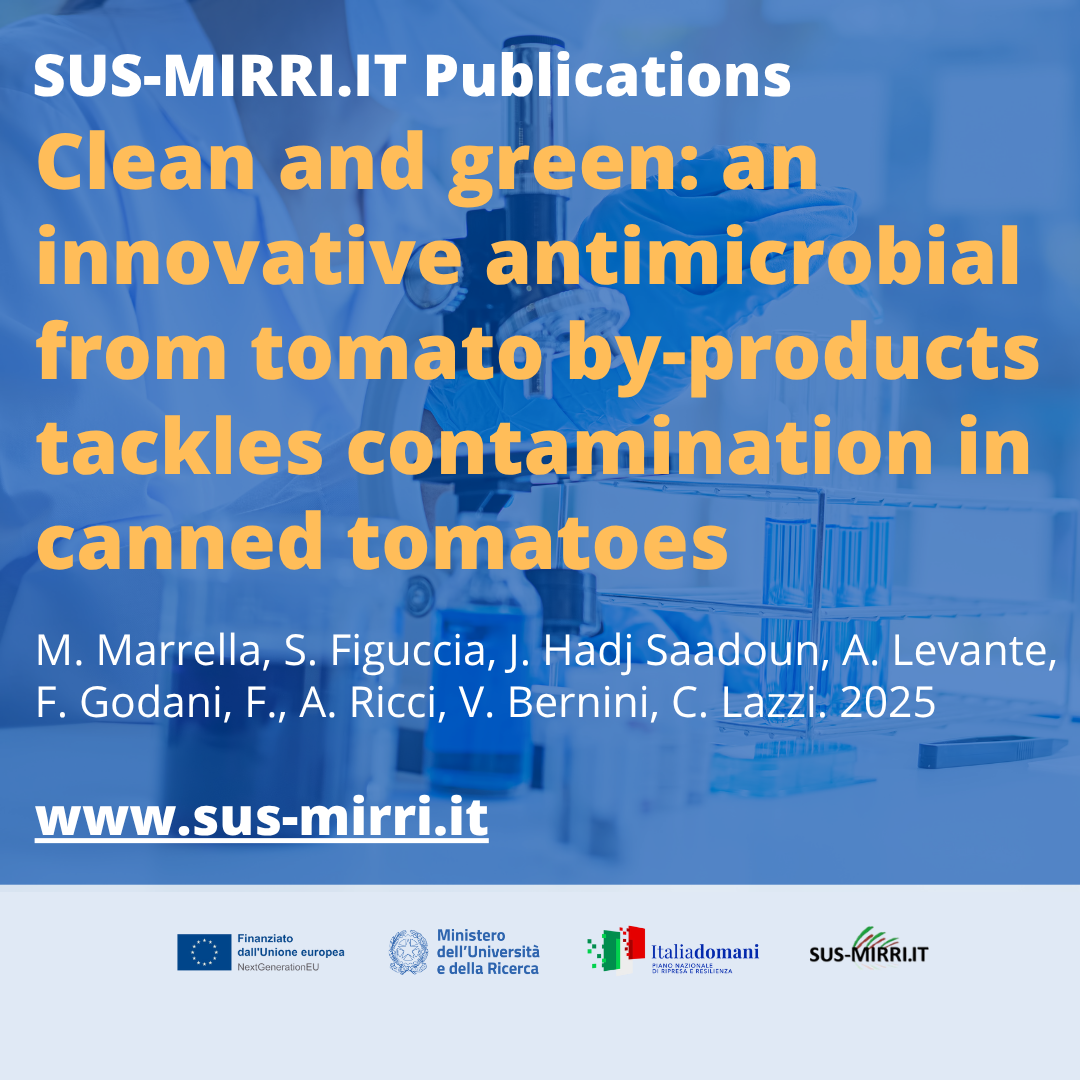M. Marrella, S. Figuccia, J. Hadj Saadoun, A. Levante, F. Godani, F., A. Ricci, V. Bernini, C. Lazzi. 2025 Clean and green: an innovative antimicrobial from tomato by-products tackles contamination in canned tomatoes. Food Control 178, 111476 https://doi.org/10.1016/j.foodcont.2025.111476
Abstract
The increasing demand for sustainable sanitization solutions in food industry has engendered renewed interest in nature-based antimicrobials. This study explores the potential of natural antimicrobials (NA) sourced from tomato production by-products for use in cooling water during the canning process. The activities of NA and the conventional sanitizer sodium hypochlorite were compared, and their combined effect on microbial inactivation was evaluated.
Strains belonging to Enterobacteriaceae, Bacillaceae, and Lactobacillaceae were isolated from a tomato processing plant and their sensitivity to the antimicrobials was assessed in-vitro. A mock microbial community, composed by the most resistant strains, was arranged to evaluate in water the effect of NA and sodium hypochlorite individually and combined. Microbial membrane damage was evaluated using qPCR with PMA dye, while plates counts were used to confirm bactericidal activity. The treatments produced several levels of damage depending on the microbial group. While Enterobacteriaceae exhibited the highest sensitivity under all tested conditions, Bacillaceae and Lactobacillaceae were differently affected depending on the antimicrobial used. Treatment with sodium hypochlorite alone resulted in low cellular damage and lead to the presence of VBNC cells. In contrast, with NA present, either alone or combined with sodium hypochlorite, greater cellular damage was observed. To note, the combination of NA with sodium hypochlorite produces a bactericidal effect against all three microbial families, even after brief exposure and it proves to be highly effective also at lower dosage. This approach represents a potentially balanced strategy for enhancing sustainability in food processing practices minimizing reliance on traditional chemical sanitizers.
Continue reading at: https://www.sciencedirect.com/science/article/abs/pii/S0956713525003457?via%3Dihub



